
Clear the air
We’re spending a lot more time indoors, these days. While many people assume pollution is just an outdoor problem, your home (and office) can also be polluted. “As a society, we make sure that our houses are well-insulated and well-sealed, but we don’t think enough about exposure to all the things we place in our homes,” says Susan Olesik, PhD, Professor of Chemistry and Biochemistry at Ohio State University in Columbus, Ohio. The air quality within and around buildings and structures has a big effect on your health, and while you can feel the symptoms—shortness of breath, dizziness, nausea—right away, they can come on years after exposure, according to the federal Environmental Protection Agency (EPA). Here’s how to breathe easier.
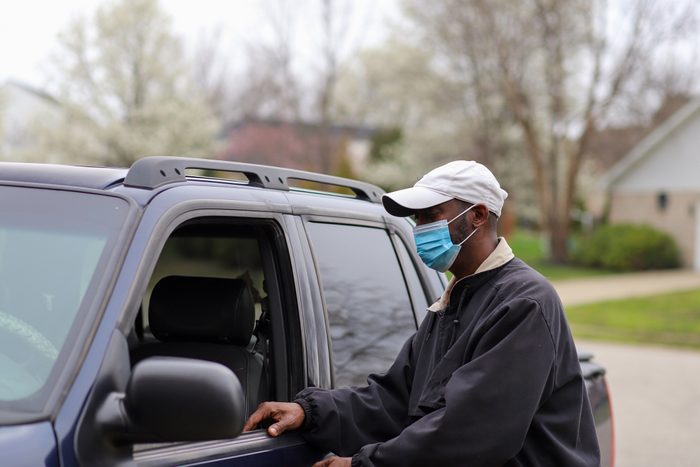
Put a mask on
They’re for more than coronavirus protection: Sumita Khatri, MD, a pulmonologist at the Cleveland Clinic, hopes more people will wear a mask under certain conditions. “If you’re exposed to chemicals or particles for your profession or jobs, ensure that the workplace is well-ventilated and air quality remains as healthy as possible,” she says, adding, “individuals should wear protective masks or respiratory in such industrial or chemical environments.”
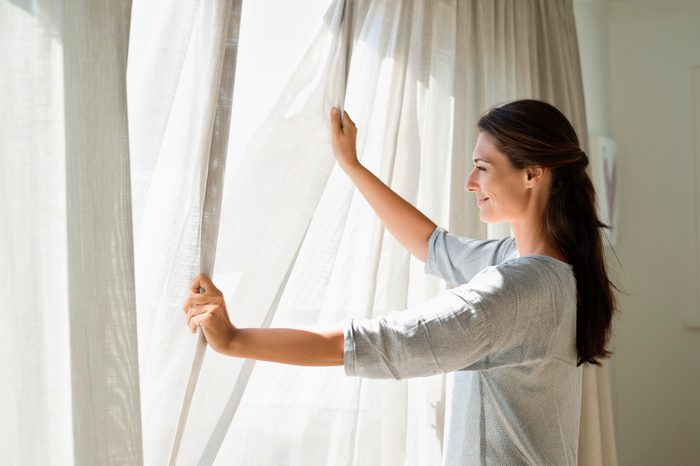
Avoid the outdoors in the morning
Not only do many people with allergies experience more sneezing and itching in the morning, but many trees release their pollen in the air at first light. Ragweed pollen also tends to fly most thickly at midday—when it’ll stick to your clothes and get carried indoors. If you want to work out, do it later in the day. These 12 natural allergy remedies provide relief.
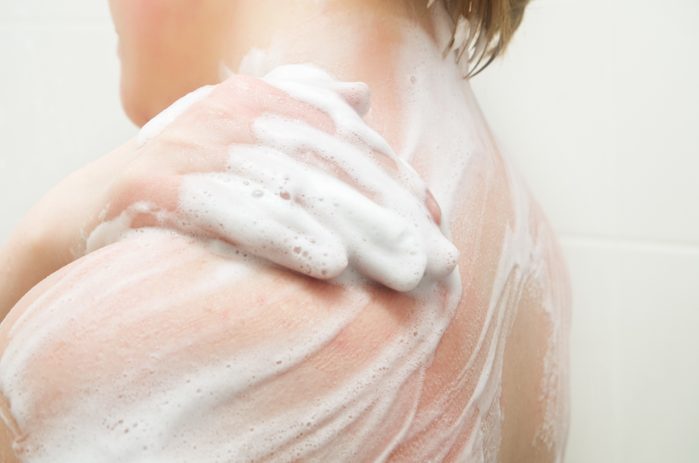
Change your clothes and shower when you come indoors
Even if you don’t feel dirty, pollen clings to your hair and clothes where it can easily irritate your nose and eyes, and contribute to indoor air pollution. Don’t have time for a quick rinse? At least wash your hands to remove lingering pollen, especially before making contact with food or your face, suggests the Asthma and Allergy Foundation of America. Try these tricks to pollen-proof your life, especially during allergy season.

Clear out old cigarette smoke
Dr. Khatri notes that one of the most common indoor air pollutants is cigarette smoke, though newer e-cigarettes are another source. The vapor emitted when someone smokes e-cigarettes releases chemicals linked to lung disease. That rule also applies to previous occupants of your home who may have smoked. “We all have heard of secondhand smoke; this is called thirdhand smoke,” she says. If you have a room that has been exposed to residual smoke, make sure to change the fabric or carpeting, which can be a risk to children or people with chronic heart and lung problems. Here’s how thirdhand smoke can damage your brain and liver.
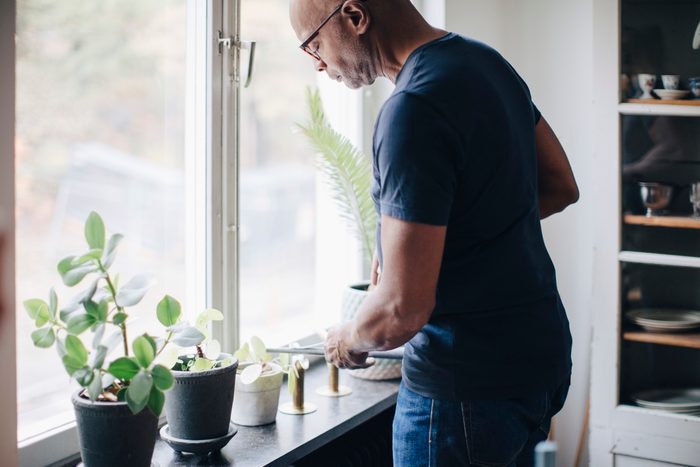
Water indoor plants sparingly
Overwatering can contribute to the growth of mold, and any water that leaks on to the floor invites mold growth as well, says Olesik. Put pebbles on top of the dirt to discourage mold spores from getting into and polluting the air, walls, and floor. If the moldy areas in your house are less than about 10 square feet (less than roughly a three-by-three foot patch), you can handle the job yourself. If not, check out the EPA’s guide Mold Remediation in Schools and Commercial Buildings. The tips apply to all building types that might be affected by mold. (These best air purifiers for mold might also come in handy.)
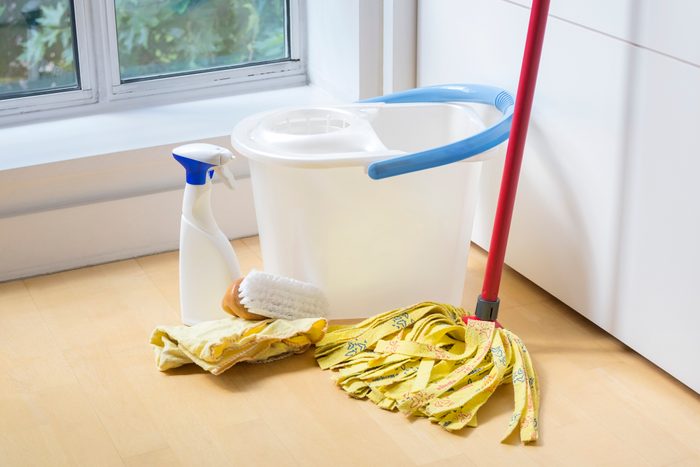
Clean the tray under the fridge with a bleach solution and sprinkle with salt
The tray is a veritable mold magnet. Adding salt reduces the growth of mold and bacteria. Clean under the refrigerator occasionally to get rid of dust and mold, and make sure your cleaning products are environmentally friendly, advises Dr. Khatri. “Cleaning products can also be harmful, so consider green and natural cleaning products which release less harmful chemicals and fumes,” she says. Check out these 12 surprising things that need to be refrigerated.
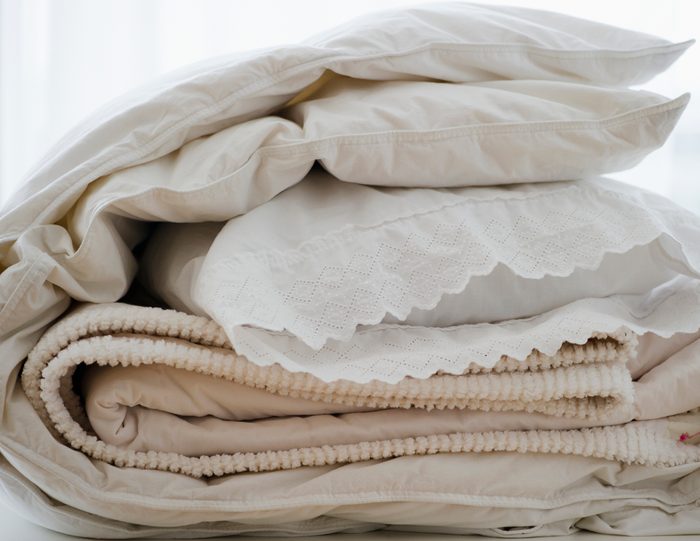
Wash all your bedding in very hot water every week
It’s the best way to kill those pesky microscopic dust mites that love your bed even more than you do and add to the air pollution in your bedroom and home, according to Dr. Khatri. It isn’t just your bedding. Here are the germiest spots in your bedroom.
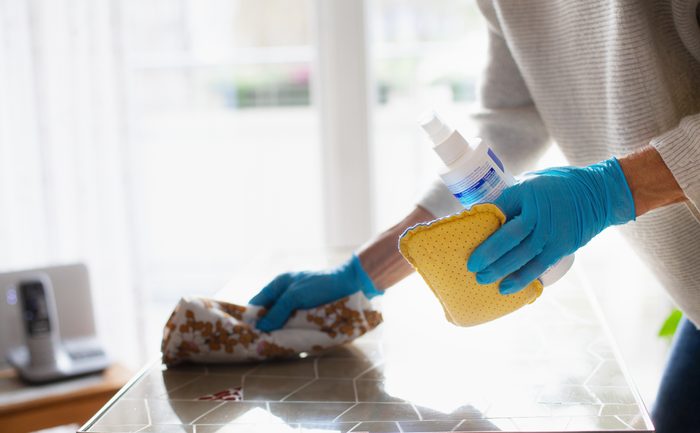
Don’t be a clean freak
Cleaning your house is great, says Oleski, but keep in mind that every time you do it you might be exposing yourself to toxic materials. She advises cleaning no more than once a week and keeping the windows open when you do.
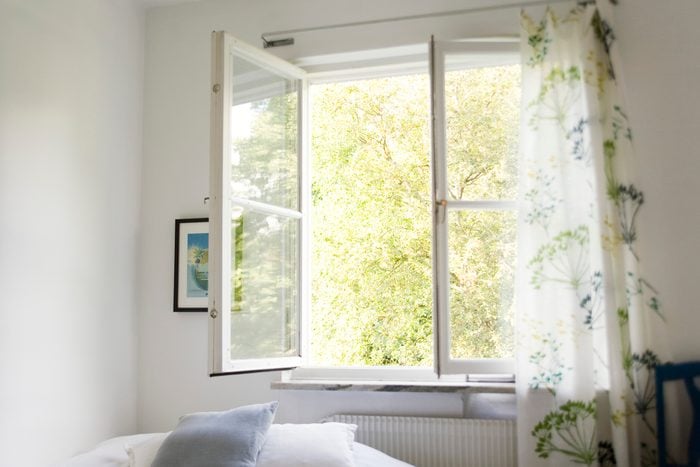
Freshen air naturally
Air fresheners and scented candles contain trace amounts of hazardous chemicals, though in amounts lower than EPA guidelines, so it’s OK to use them on occasion, says Oleski. But she warns against overdoing either approach to fresher air. “It’s better to open the window if the weather allows.”
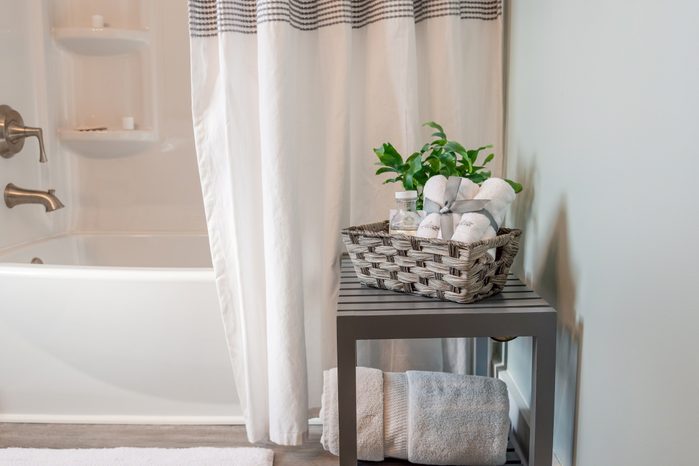
Wash the shower curtain in hot water and bleach every month
Keep your bathroom mold-free to prevent breathing problems. Use cheap shower liners that you can replace every couple of months. To help stop mold growth in your bathroom, always run the exhaust fan or open a window or door when using the shower to help keep surfaces dry. Studies find overgrowth of mold, especially black mold, is a contributor to asthma and other respiratory problems, according to a 2017 report in Integrative Medicine: A Clinician’s Journal. Another option: Run a small portable fan (away from water sources) during and after showers. Also, check to see that the vent where the exhaust exits the house isn’t blocked by leaves. Here are 7 surprising reasons you can probably get away with showering less.
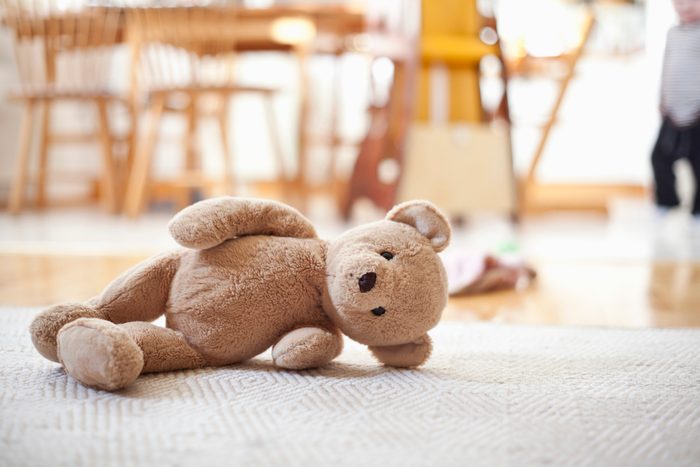
Give stuffed toys a deep freeze
That teddy bear could be riddled with dust mites! Regularly slip stuffed toys into a freezer bag and let them chill for 3 to 5 hours. The cold will kill any dust mites that could contribute to indoor air pollution, according to a 2017 report in the Journal of Allergy and Clinical Immunology. Check out these genius tricks to keep your freezer organized.
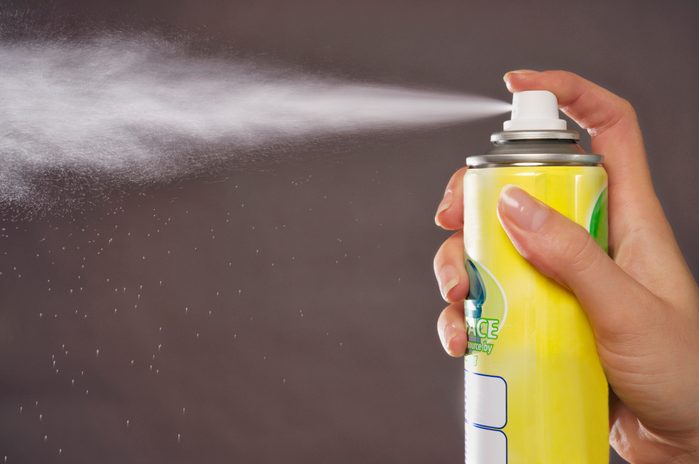
Don’t spray
Releasing aerosol sprays into the air isn’t a good thing from an environmental perspective, says Olesik. “If you want to clean your house, I’d recommend wipes or cleaning with liquid and a cloth, with gloves on,” she says.
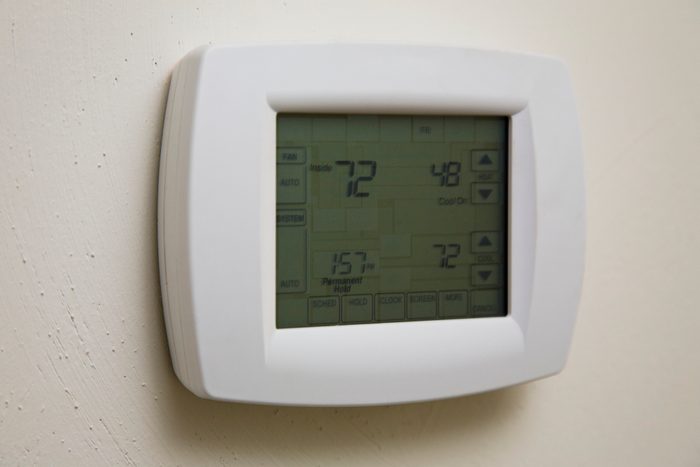
Keep your thermostat set above 65°F in the winter
If you set it too low, you’re encouraging the growth of mold in damp air. The heat dries out the air, preventing mold growth and pollution. Of course, too-dry air can also irritate your lungs and sinuses, while too much indoor humidity can contribute to the growth of bacteria and viruses, according to a 2018 study in the International Journal of Hygiene and Environmental Health. The ideal humidity in a home is around 50 percent, according to the American Lung Association.
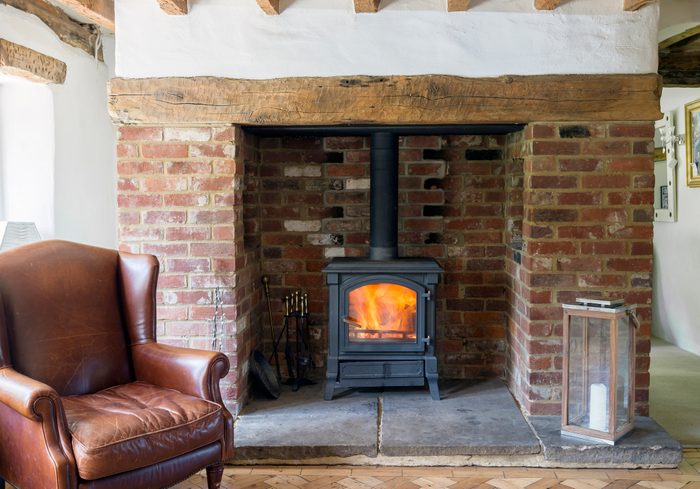
Burn wood with caution
One of the biggest contributors to indoor air pollution is wood-burning stoves, says Oleski. Old or poorly installed wood-burning stoves pose a higher risk of smoke emission and an increase in air pollution. She suggests using them with caution, and to use a good blower to keep fresh air circulating.
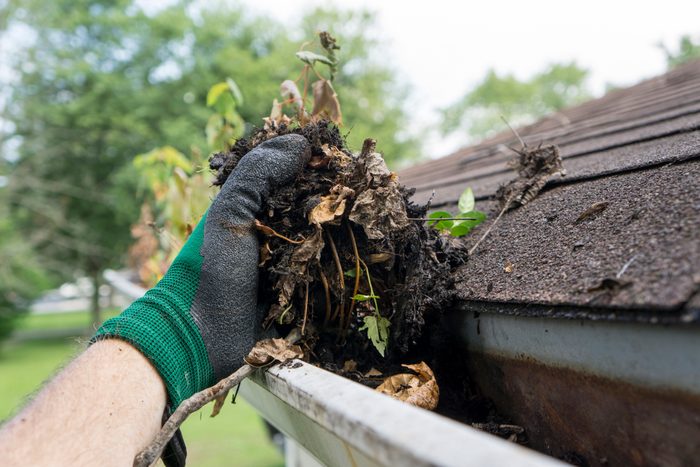
Clean out your gutters and make sure they’re not clogged
Clogged gutters can result in water seeping into the house, leading to mold growth, according to the EPA. Yes, mold can grow virtually anywhere if the conditions are right, including on top of your house. Exposure to high levels of household mold may trigger mold allergy symptoms. Next time it rains, check your gutters. If you see water leaking out of end caps, flowing on the outside, or dripping behind them, it’s time to get out the ladder.
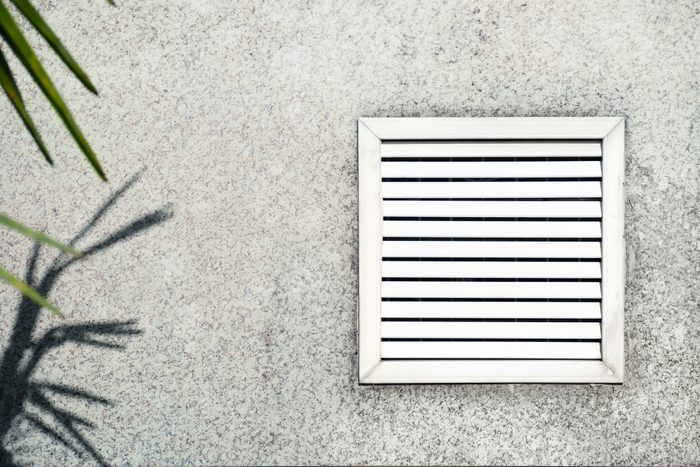
Follow your dryer vent and make sure it’s vented to the outside
For every load of laundry you dry, that moisture has to go somewhere. If your dryer is vented to the garage or basement, you’re just asking for mold buildup, says Dr. Khatri. Speaking of laundry, switching from fragranced to fragrance-free products can be a straightforward and effective approach to reduce ambient air pollution and potential health risks, according to a 2018 study in the journal Air Quality, Atmosphere & Health. (These are the times you should definitely be using an air purifier.)
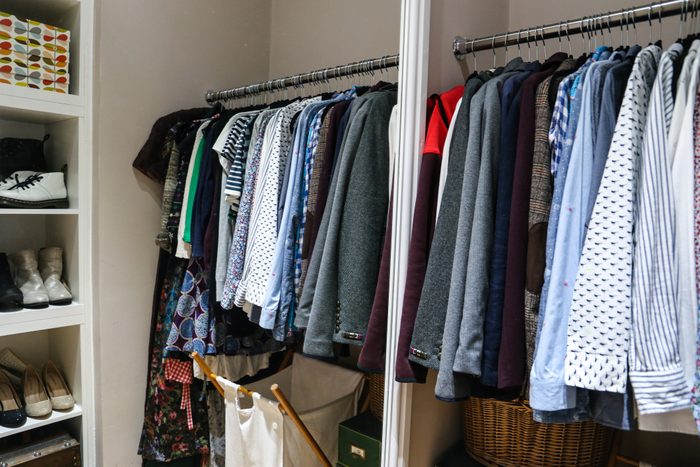
Declutter the right way
Do this regularly: Throw out or give away coats and other clothing you haven’t used in the past year. Put sports equipment in the garage or basement where it belongs. Slip shoes into hanging shoe bags. When you finish, you should be able to see all your closet floors and back walls. “Minimizing clutter is a great way to improve air quality because it allows you to see dust and other contaminants that might be invisible,” says Dr. Khatri. Now give everything a good vacuum and you’ll have significantly reduced the amount of dust in your house and cut down on your indoor air pollution. Here are other smart ways to dust-proof your home.
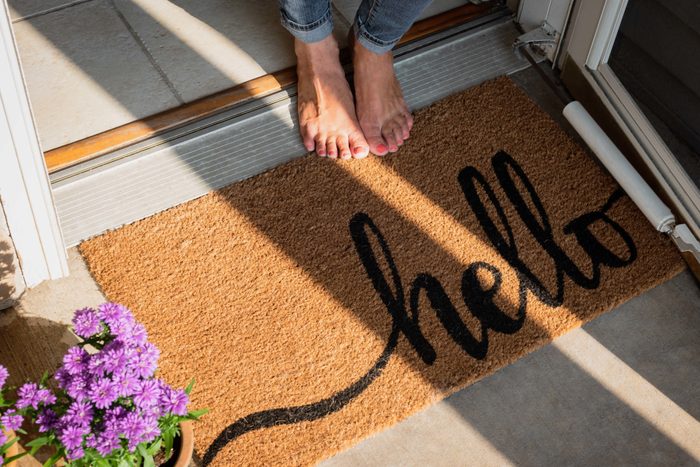
Use doormats with synthetic fibers
Doormats made of natural fibers such as wicker can break down and become food for mites, mold, and fungus that then get tracked into your home with every new guest. Wash all mats weekly with a safe detergent, says Dr. Khatri. Here are some cleaning agents the American Lung Association recommends.
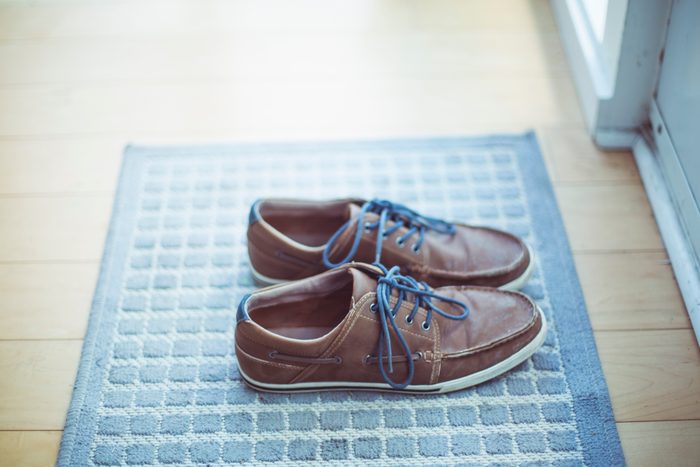
Leave shoes by the door
Mud isn’t the only thing you track into your home, notes Oleski. Parking your shoes by the door keeps your floors clean and reduces indoor air pollution, especially pesticides tracked in from outdoors. “You know those signs that say ‘keep dogs off lawn?'” They should also apply to people,” she says. Here’s how your house might be making you sick and what to do about it.
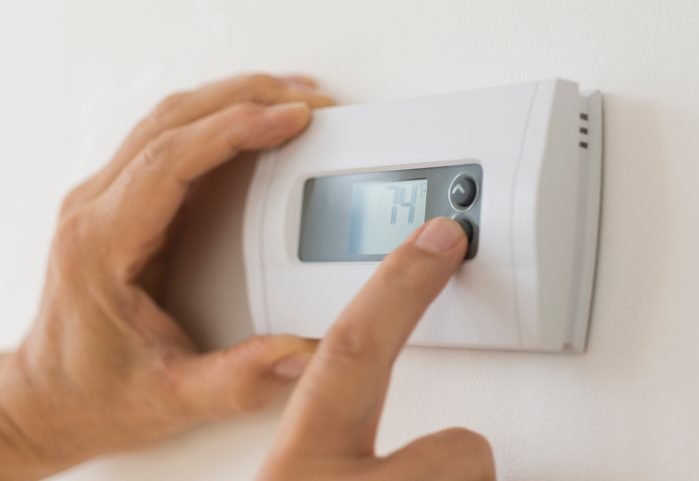
Turn on the AC
Air conditioners remove mold-friendly moisture and filter allergens entering the house, says Oleski. Just make sure to clean or change the filters often or you’ll just make things worse. Check out the 12 things that pollute the air inside your home.

Keep your pets clean
Just like you take off your shoes, always make sure to wipe off your pet’s paws when they come in from being outdoors. Toweling off their coat can also help prevent the spread of pollen indoors. You can also try giving them frequent water baths to help dissolve the natural, allergy-causing substances in their sweat and skin that spread to their fur. Here’s more advice about avoiding pet dander and other potential allergens.